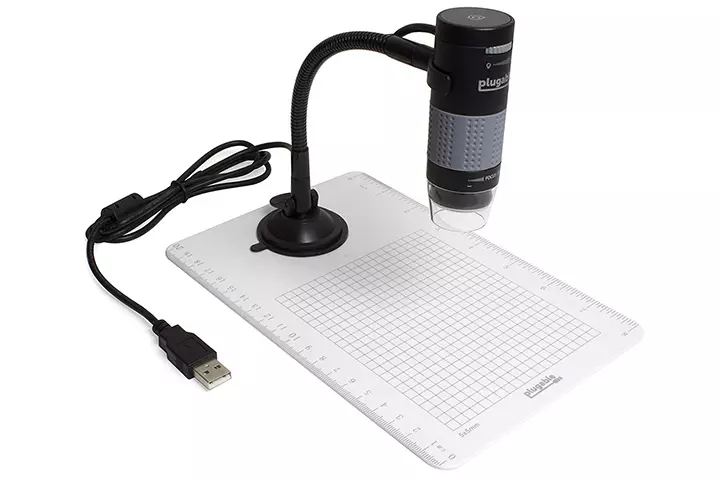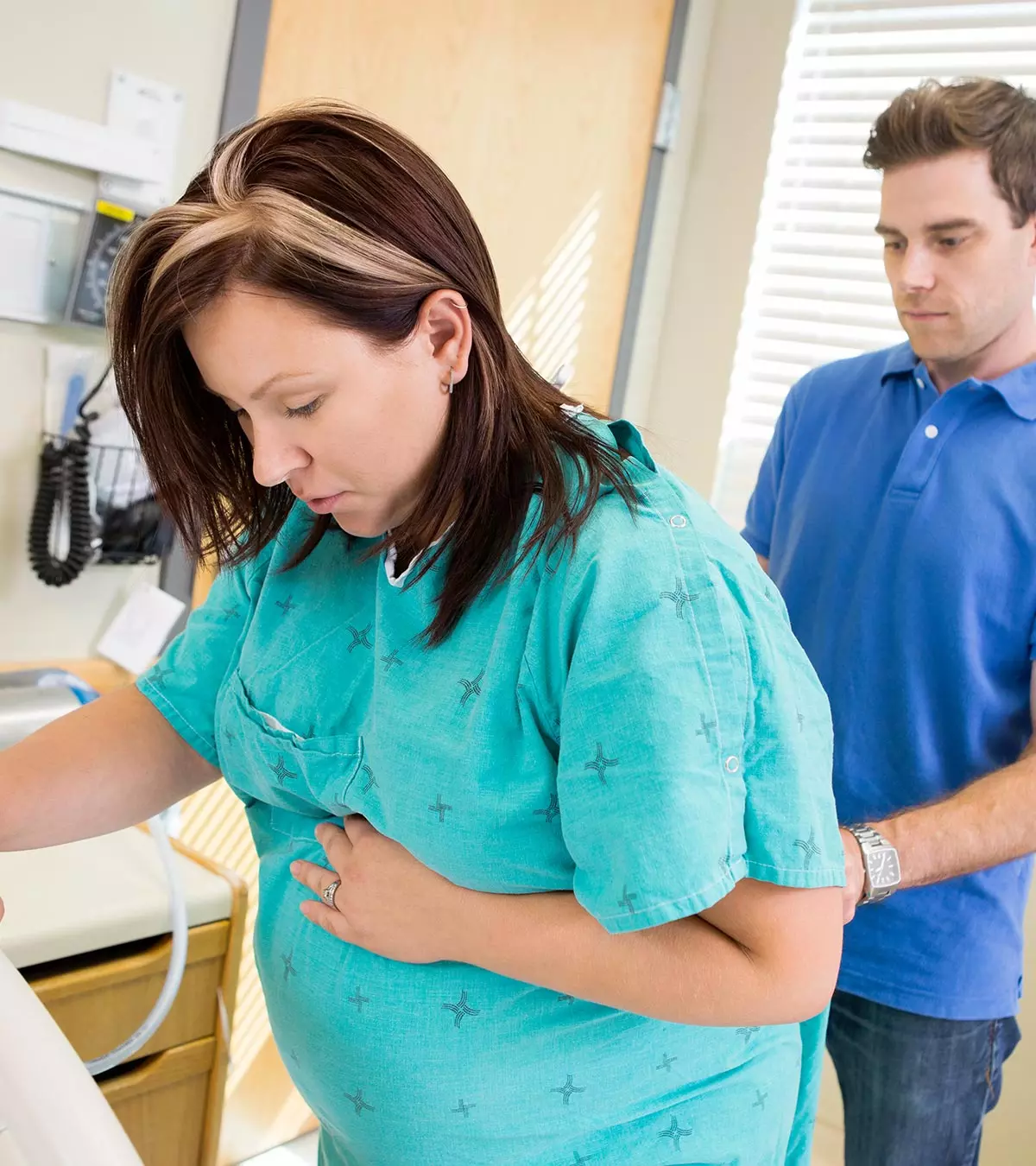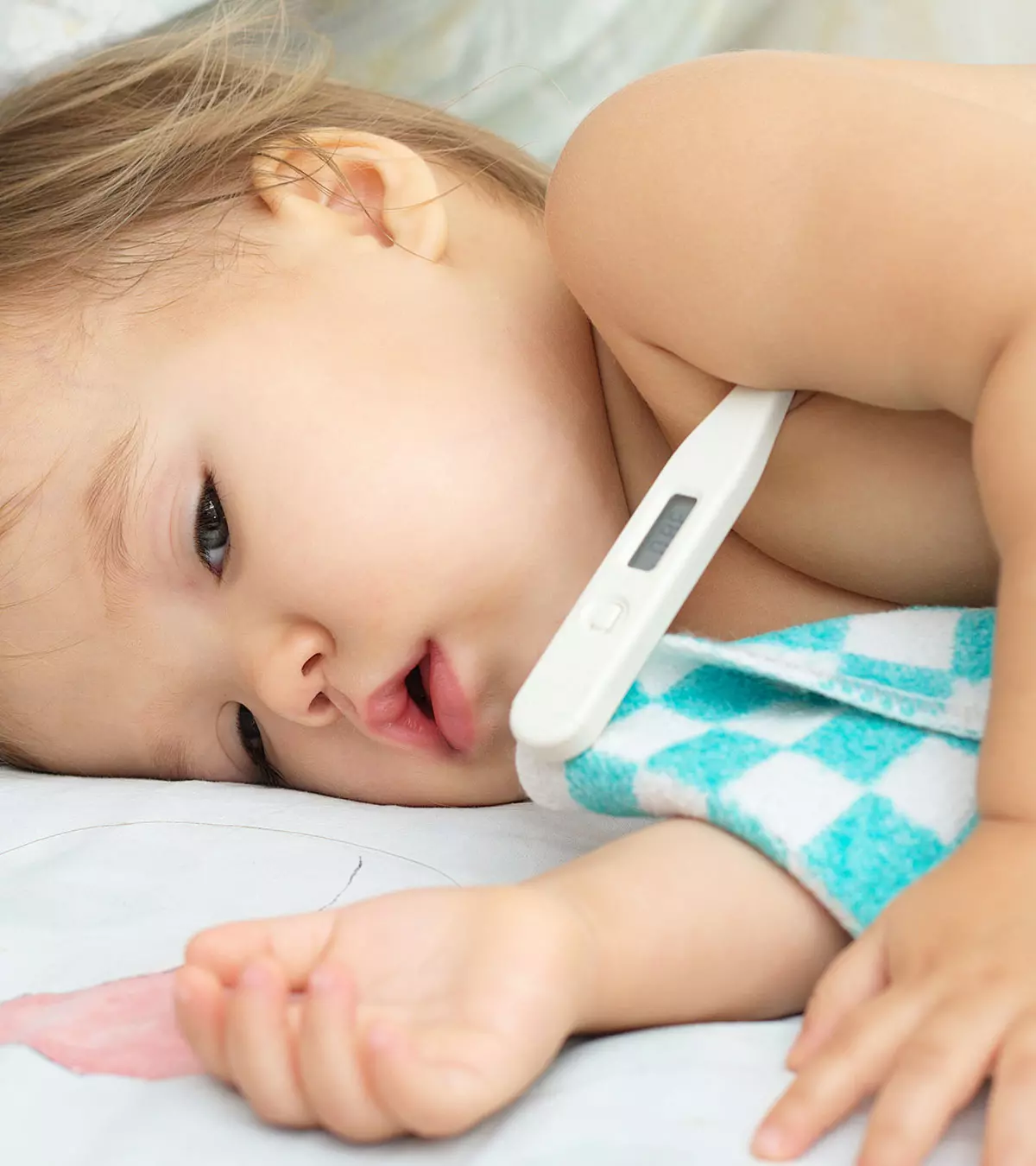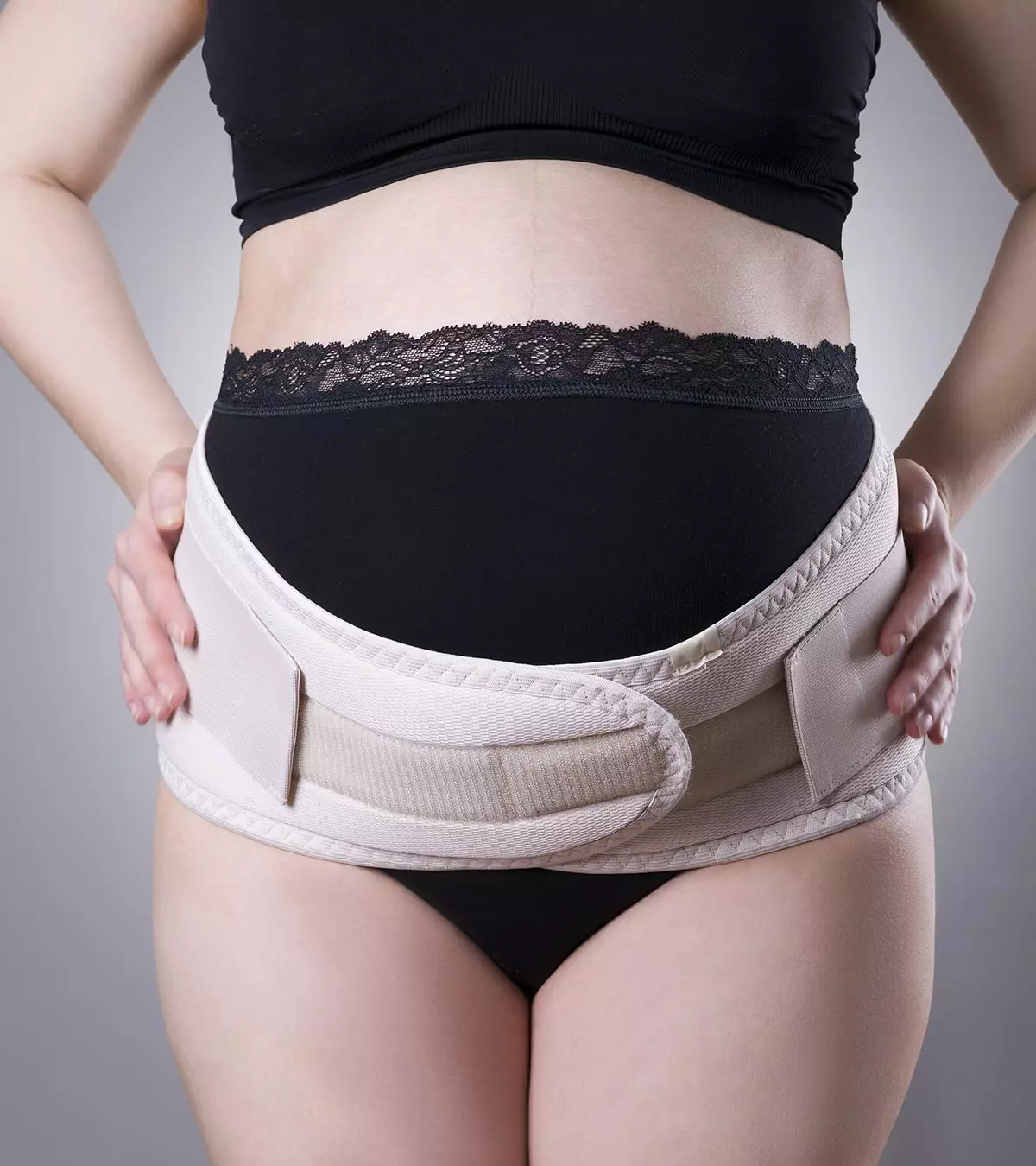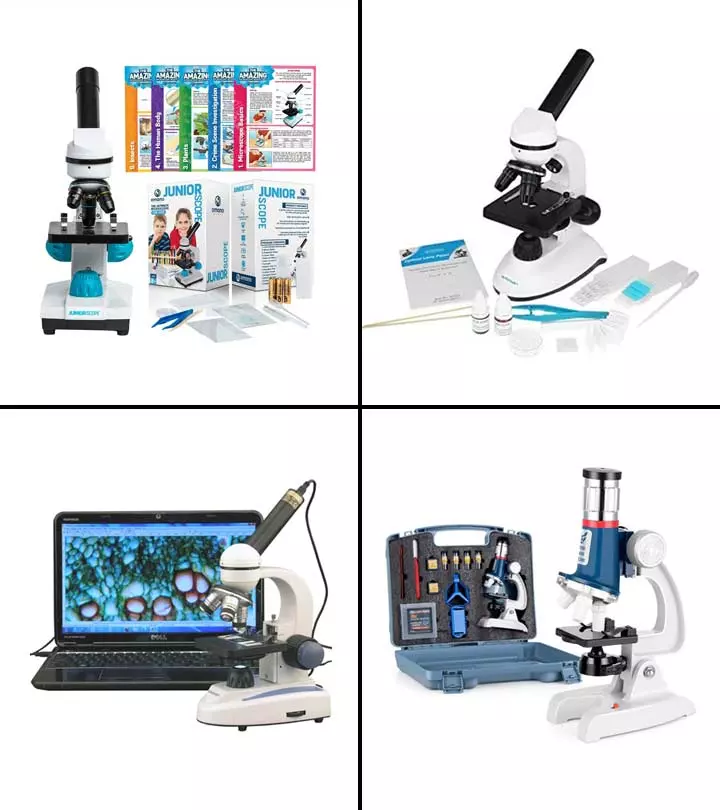

Finding the best microscope for kids can seem like a daunting task for parents. There are many things to consider, including style, size, type, and appropriate features. Besides, this can be an educational and fun gift for your child as it can encourage them to explore and conduct several experiments and other scientific activities. It helps create a stimulating love for science as practical experiments conducted using microscopes can help them understand different concepts better. These devices are available at affordable prices and in child-friendly designs. Here is a list of our top recommendations of the most popular microscopes for kids, suitable for your budding scientist.
Top Picks
11 Best Microscopes For Kids
1. Best For Adequate Lighting: Omano JuniorScope Microscope for Kids
This instrument from Omano is a high-quality first microscope for children. If you want to know more about the results, take a look at this review on YouTube.
Pros
- Light on both the top and the bottom of the stage provides adequate lighting to the specimen.
- The microscope is quite portable, and your child can carry it around with ease.
- It comes with learning cards that provide information about the microscope and how to use it to observe plants and insects.
Cons
- Some buyers did not like the quality of the LED and complained about the lights failing after a few months of use.
2. Best For Dissection: Plugable USB 2.0 Digital Microscope
If your child loves viewing microscopic items on the computer screen, then this digital microscope from Plugable is an excellent pick. You can check this YouTube video for more information about the product.
Pros
- The device is fundamentally a camera capable of capturing microscopic images. It is a dissection microscope that captures incredible details of the objects under study.
- The camera connects to a computer through a standard USB cable.
- A capacitive touch button on top of the microscope allows you to take pictures of the items with just a simple touch. You can even make videos using the record feature of the camera, to let the child document their experiences for future reference.
- An LED light illuminates the item under the microscope.
Cons
- The microscope camera’s magnification capabilities are on the lower side, and may not work for studying all types of specimens.
- Since the microscope involves interfacing with a computer, the camera may be ideal only for adolescents and teens.
3. Best For Slides And Objects: National Geographic Dual LED Student Microscope
A simple microscope that with just the right features for a child who enjoys observing several specimens.
Pros
- It contains two lenses: a compound lens and a dissection lens. One can see both slides and objects with these lenses.
- It has an overhead light and stage LED light to illuminate the specimen for better observation under the lens.
- It comes with reusable blank slides, covers, dropper, tweezers, and a vial of brine shrimp eggs for observing the life cycle of the brine shrimp.
Cons
- Some parents felt that the quality of the microscope could have been better. A few buyers even reported the lights not functioning right out of the box.
4. Best Microscope With Accessories: My First Lab MFL-06 Duo-Scope Microscope
This microscope provides both compound and dissection lenses, which increases the number of specimens the child can study under the microscope. If you are still unsure about purchasing, you can check out a review of this product on YouTube.
Pros
- There are two lights on the microscope: one on its arm and another on the base. The two lights provide excellent illumination for viewing the specimen.
- There are two focus-adjusting knobs on either side of the microscope, for ease of use.
- The device comes with a 50-piece accessory kit, which includes slides, forceps, plastic test tubes, and even a stain to color the specimen.
- The manufacturer provides an instruction manual, which contains instructions on how to prepare slides and an exploration guide with suggested ideas for the use of the microscope.
Cons
- There is not much gap between the stage and the 40x objective lens, which can make using the instrument highly uncomfortable and even ruin the specimen.
- A few users noted that one or both the lights tend to fail after some months of use.
5. Best Portable And Lightweight: Carson MicroBrite Pocket Microscope
Your child can carry this microscope anywhere like a true explorer and field scientist.
Pros
- The microscope is so compact that it can easily fit into a small bag. It is made of plastic and lightweight.
- The LED light at the base of the microscope provides illumination to whatever objects are being viewed through the lens.
- You can buy a single microscope or buy a pack of six. Each microscope is backed by a year’s warranty from the manufacturer.
Cons
- It is a basic dissection microscope and is best suited for use only by young children, who are just learning to use a microscope.
6. Best For Young Children: Educational Insights GeoSafari Jr. My First Microscope
If you are looking at a basic microscope for a young child, then this product from Educational Insights will be a great choice.
Pros
- There are two observation lenses that provide a binocular view of the specimen. It can be a useful feature for young children who may find it hard to peer through a microscope with one eye.
- There is adequate space between the stage and the lens. It means the child can place and observe large objects too.
- A LED near the lens lights up the specimen for a detailed view.
- The dual knob is chunky and easy to rotate with little hands.
Cons
- The body is made entirely out of plastic, which is not a very durable material.
- The maximum magnification of this dissection microscope is 8x, which is very low compared to the others.
7. Best Microscope With Camera: AmScope M158C-E Microscope With Camera
If the child wants to record their discoveries and experiments, then this microscope from AmScope will be a good choice.
Pros
- The microscope comes with a camera that fits into its eyepiece. One can connect the camera to a computer or a projector using the supplied USB cable.
- There are two focus knobs, one for coarse focus and another for fine focus. The two-knob focus adjustment lets the child get a clear image.
- There are two lights: one on the handle for overhead illumination and another at the base to illuminate the slide from the bottom.
- Most parts of the device are made from metal for durability.
Cons
- The camera software has limited compatibility and does not work with the Mac operating system.
8. Best Microscope With Stain-Resistant Metal Body: AmScope M30 Kids Beginner Microscope
The microscope comes in a kit containing other items that enhance the overall user experience.
Pros
- The microscope kit has 52 accessories, including prepared slides, blank slides, additional optical lenses, and even a vial of brine shrimp eggs to observe under the microscope.
- The base of the microscope contains an LED light with a mirror. The LED, along with the mirror, throws adequate light on the specimen so that the child can see it better.
- It offers a wide range of magnification starting from 120x to up to 1200x. It means the child can observe a wide variety of items and study varying levels of details.
- The manufacturer ships a hard case to let you carry the microscope and other accessories around easily.
- The frame (including the handle) is made from stain-resistant durable metal.
Cons
- The microscope and its multiple parts may come across as complex for a young child, making it ideal for adolescents and teenagers.
- Except for the frame, the remaining parts are made from plastic, which left some buyers disappointed.
9. Best Microscope With Activity Journal: Educational Insights Nancy B’s Science Club Microscope
It is an ideal microscope for children who wish to analyze their specimens in detail.
Pros
- It comes with a 22-page activity journal that gives detailed information and instructions on making slides and how to study them.
- The microscope has a wide range of magnification, starting from 30x and going all the way to 400x.
- A plastic tab allows the child to turn the nosepiece easily. No need to hold the nosepiece to switch to the desired lens; just turn the tab instead.
- It is a dual microscope, which means it contains both compound and dissection lenses.
Cons
- Some parents did not like the quality of the plastic used in making the microscope.
10. Best For Viewing Transparent Specimens: Uarzt Microscope Science Kit For Kids
Uarzt Microscope Science Kit for Kids is a starter kit for enthusiastic young kids who are keen on observing under the microscope and exploring new things.
Pros
- The microscope comes with a magnification of 100x, 400x, and 1200x.
- It comes with a color filter so that the kids can see transparent specimens better.
- The dual spring clips help to hold the slides.
- It has a built-in LED light and reflecting mirror for clearer viewing.
Cons
- It does not come with instructions or a manual.
11. Best For High Magnification: Little World Kids Beginner Microscope
The experience of using this microscope from Little World is close to using a scientific compound microscope used in school or college laboratories.
Pros
- It provides a wide range of magnification with the highest setting at 1200x magnification.
- An LED light at the base provides adequate illumination to observe the specimen.
- It comes with several accessories, including blank slides, tweezers, and sample-collecting vials.
Cons
- The body is all plastic, which could make it less durable and appealing.
Parts Of Microscope
The following image labels the various parts of a standard microscope:
Types Of Microscope
There are two types of microscopes.
- Compound microscopes: A compound microscope is a standard microscope that we have seen and used in school. The kids’ version is usually a conventional model with two lenses, one at the eyepiece and another on the nosepiece. The nosepiece has a different objective lens, with its unique range of magnification. The eyepiece and the objective lenses, together, provide a magnified image of the specimen.
- Stereoscope: Commonly called the dissection microscope, this has a single lens with high magnification capabilities. Unlike the compound microscope, there is no need to mount a flat, two-dimensional specimen on a slide to observe it. Instead, you can place the entire object right below the lens to study it. It thus provides a three-dimensional view of the item. Dissection microscopes are for studying insects, flowers, coins, and electronic circuit boards.
Before you go for one of these types, know about the features that you might want in the microscope.
What Features To Consider When Buying A Microscope?
Here is what you should look for when purchasing a microscope.
- Magnification power: The magnification power can vary from one variety of microscope to another. Dissection microscopes usually have low magnification power while compound microscopes provide higher magnification. If your child wants to mount specimens on the slide, then a compound microscope with up to 1000-1200 magnification will work great.
- The number of lenses: Compound microscopes can have multiple lenses on the nosepiece. The more lenses, the more magnification options the microscope can provide. Pick a compound microscope that has at least two lenses on its nosepiece.
- Durability and portability: Children may not be as careful as adults when handling a device like a microscope. So it is essential to pick one that is made from a durable material such as metal. But metal can be heavy, and metal microscopes may not be as portable as their plastic counterparts.
- Extra features and accessories: Several manufacturers sell their microscope as part of a science kit that also contains slides, coverslips, tweezers, and a field manual on collecting specimens. These accessories make the microscope a better value for money and also enhance the user experience.
Why Trust MomJunction?
A microscope is an intriguing device for children. If you plan to give this interesting and educational device to your little budding scientist, this post is for you. We have scoured several e-commerce websites and analyzed each product feedback before bringing you this list of the best microscopes to buy for kids. We have also added a buying guide to explain the features, types, and important details to check before choosing the most affordable and age-appropriate microscope for your child.
Growing up with a microscope can help your child explore the depths of science, develop their interest in STEM, and make them curious, critical thinkers. The best microscopes for kids listed here are portable and made of high-quality materials, so your children can use them and continue learning for years. They also come with various features, such as slides, coverslips, and tweezers, which make learning fun. So, gift one of these to your little one and help them stay engaged for hours and nurture a wonderful hobby.
Community Experiences
Join the conversation and become a part of our nurturing community! Share your stories, experiences, and insights to connect with fellow parents.
Read full bio of Wedetso Chirhah



